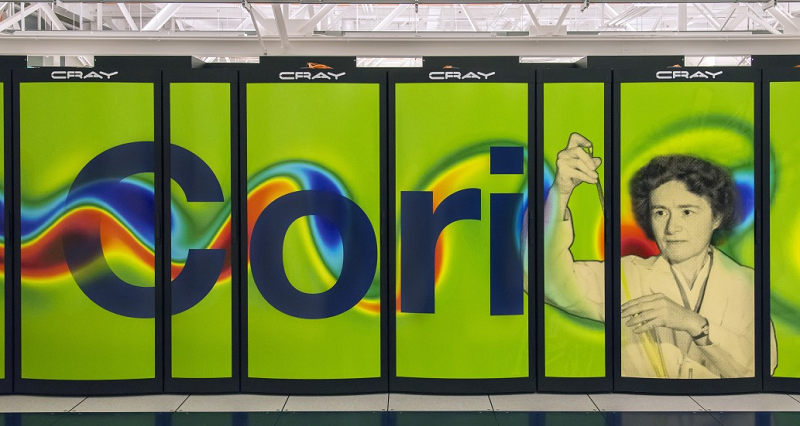
April 12, 2017
By: Michael Feldman
Cori, the fifth fastest supercomputer in the world, has been used to model a 45-qubit circuit, which, by all accounts, is the largest simulation of a quantum computer ever achieved. The virtual circuit is just a handful of qubits short of a quantum computing system that would be more powerful than any conventional computer currently devised.
 Source: National Energy Research Scientific Computing Center (NERSC)
Source: National Energy Research Scientific Computing Center (NERSC)
Experts in the field believe that a 49-qubit universal quantum computer will equal the power of the most capable supercomputers using classical architectures. Once someone builds a quantum computer with 50 qubits or more, there is no way for classical machines to keep up. At least that’s the conventional wisdom. The concept is known as “quantum supremacy,” and based on the progress taking place at IBM and Google, the construction of such a system is probably just a few years away.
Simulating a large quantum circuit on a classical supercomputer is significant, since such work can be used to building real quantum systems. A paper documenting the achievement describes the rationale as follows:
Experimental devices featuring close to 50 quantum bits (qubits) will soon be available and may be able to perform well-defined computational tasks which would classically require the world’s most powerful supercomputers. Going even beyond these capabilities means entering the domain of Quantum Supremacy. While one of the computational tasks proposed to demonstrate this supremacy – the execution of low-depth random quantum circuits, is not scientifically useful on its own, running such circuits is still of great use to calibrate, validate, and benchmark near-term quantum devices.
The 45-qubit simulation was performed on Cori, a supercomputer housed at the National Energy Research Scientific Computer Center (NERSC), which is run by Lawrence Berkeley Nation Laboratory (aka Berkeley Lab). Cori is a 29-petaflop (peak) Cray XC40 system powered by Intel’s latest 68-core Xeon Phi (“Knights Landing”) processors. The simulation was run across 8,192 of Cori’s 9,688 single-socket Xeon Phi nodes and used half of its one-petabyte memory. Averaged over the entire run, the simulation achieved 428 teraflops, which represents less than two percent of Cori’s peak performance. That’s a consequence of the large amount of time spent doing communication in the simulation rather than computation. More generally, it reflects the difficulty of making a conventional computer behave like a quantum device.
The researchers believe a 49-qubit simulation is possible on a conventional supercomputer, but would probably require the use of solid state drives to supplement the machine’s memory capacity. Such an achievement would be especially valuable in designing and implementing more powerful quantum computing systems.
